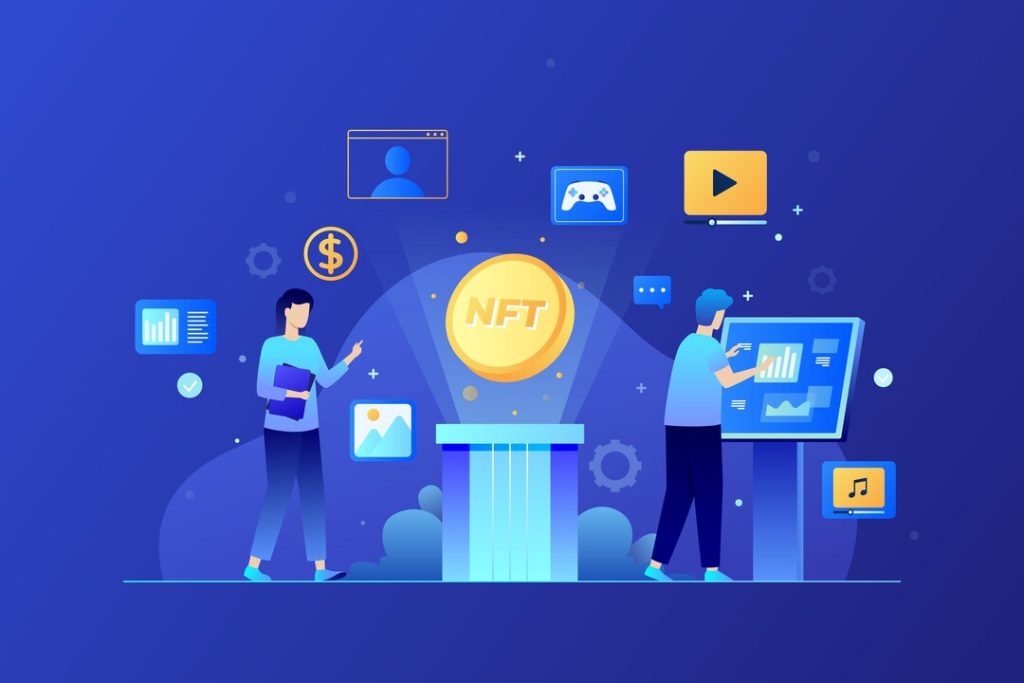NFTs Reflect Tangible Asset Ownership


NFTs can be used to represent ownership of physical assets, like real estate, car, shares in company, artefacts, etc. Most of the time, NFTs are made available through a service or company that promises to provide a certain service in exchange for the ownership of NFTs. For example, a car company could issue NFTs that represent ownership of a certain model of its cars. The owner could transfer ownership to another person by selling it for an agreed price on an open market.
As these examples show, tangible assets can be represented by digital tokens and stored on blockchain networks rather than physical ledgers.
The recent interest of governments and central banks in the blockchain technology can be explained by the fact that it can be used to record and manage physical assets.
There are two types of blockchains – private blockchains, which are managed by a given organisation, like a car company, or a bank. Public blockchains, on the other hand, are open to all users who have access to them. They are managed by no single organisation, and anyone can participate in the transactions related to that blockchain network. Bitcoin and Ethereum are examples of public blockchain.
Since most tangible assets are controlled by central authorities and private companies like car manufacturers, there is a need for distributed ledgers to record their ownership through a blockchain network.
Blockchain technology can be used to track the ownership of physical assets. This can be done in two ways—tracking ownership as it moves from a manufacturing facility to the end user, or between different users (exchanges).
An example of the first case is a car being built. It is assigned a unique identification number or some other form of identifier that appears on the blockchain for the entire manufacturing process, including when it is sold to a customer. The second example would be when digital records are exchanged between two users who are owners of that asset – for instance, when they are trading a car between themselves.
An example of representing ownership through NFTs:
Car company issues NFTs that represent ownership of its cars. The owners could transfer ownership to another person by selling it on an open market if they want to sell their cars. Car manufacturing company records ownership information of cars built on blockchain. The same information is available for car owners and buyers.
In some cases, a specific token could be issued for every single physical asset on the blockchain. However, in most cases, only the total number of tokens will be recorded on the blockchain network. For example, a car manufacturer can issue 1 million tokens that represent ownership of all cars produced by that company over the next three months. The advantage of this model is that it allows the issuer to handle most of its assets through a single token – this is more efficient than issuing 1 million tokens per car.
NFTs can also be used to represent intangible assets, like data and text. They can be used to represent ownership of copyrights and trademarks, loyalty points or other features in the application layers of the Internet.
There are several ways to manage NFTs that correspond with real-world assets – they can be represented by tokens in different denominations (e.g., a token for 100 euros), or issued by banks or other financial institutions. The most obvious advantage of NFTs is their ability to reflect tangible assets, representing for example ownership of real estate or ownership of shares in a company. They can also be used to represent ownership of car, copyrights and trademarks.
In essence, NFTs can be used to represent a large number of real-world assets through a single piece of data on a blockchain network.
source: https://www.linkedin.com/pulse/nfts-reflect-tangible-asset-ownership-dr-rehan-altaji/

